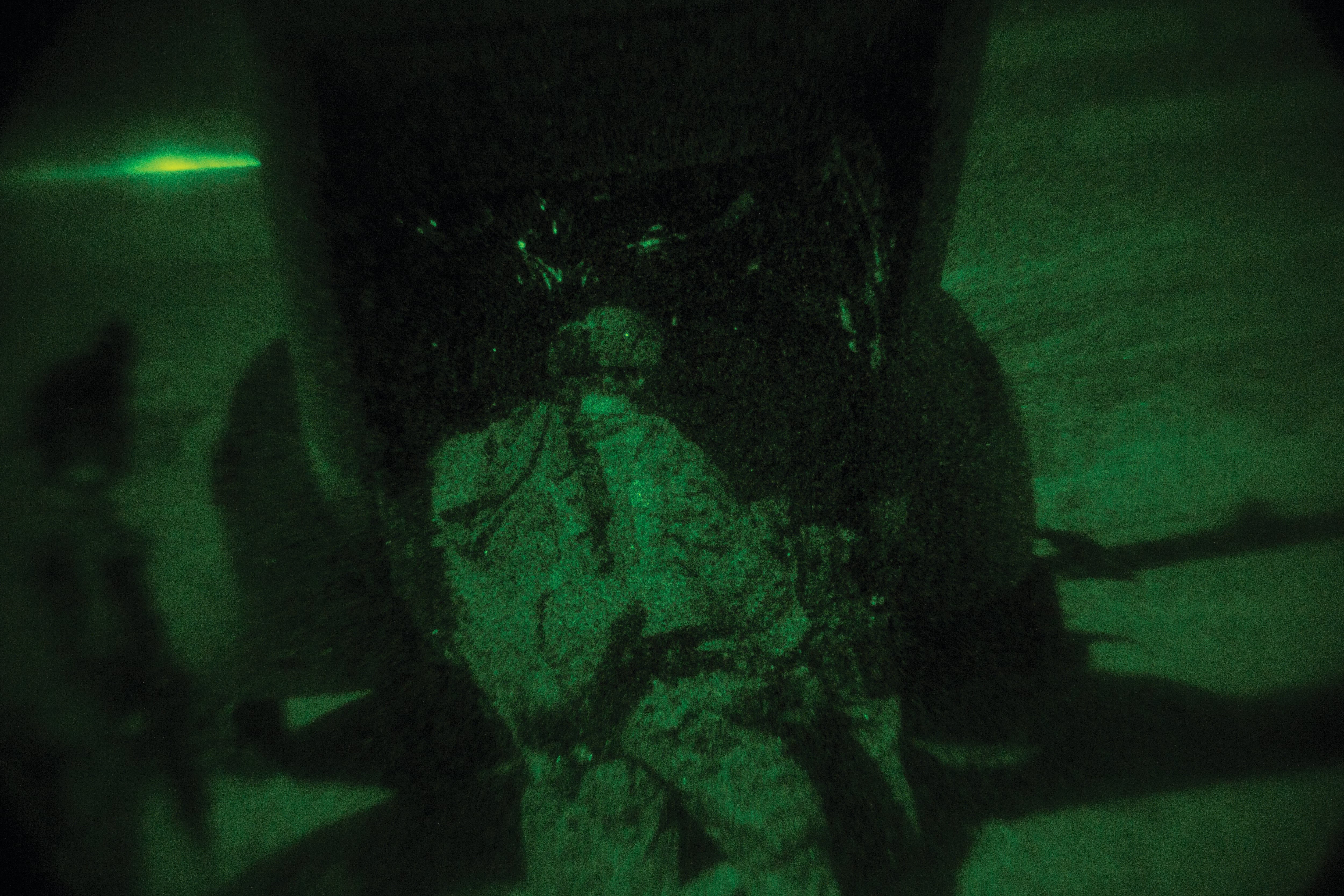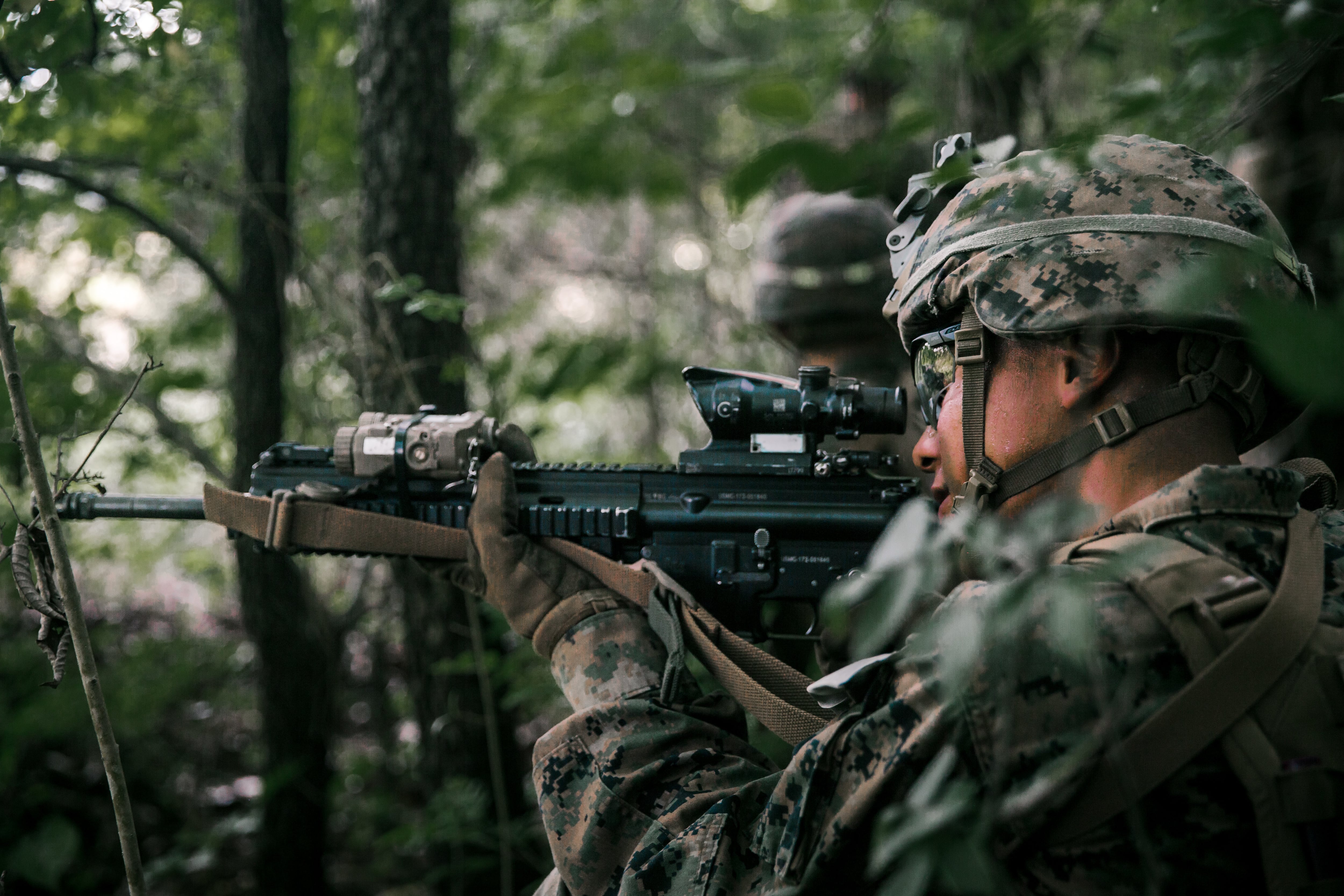WASHINGTON ― More than a decade of finding, fixing and killing terrorist targets gave Marine Corps Special Operations Command a baptism into the world of fast-paced, worldwide joint operations.
But to contribute to the next fight, MARSOC will push itself into deeper levels of war-fighting, finding ways to tackle both the deep, strategic shaping and reconnaissance challenges of near-peer adversaries while also delivering on irregular warfare needs across the globe.
That’s how Col. Ian Fletcher, assistant chief of staff of plans and resourcing, described the newest members of the special operations community’s way forward on Tuesday at the 2022 Modern Day Marine exposition in Quantico, Virginia.
RELATED

Those moves dovetail with the Marine Corps Force Design 2030 efforts, for which MARSOC has been part the recent experimentation.
The recently released 2022 update to force design puts a premium for the Marine Corps getting after reconnaissance and counterreconnaissance. The update went so far as to note that early planning focused too much on lethality and must be rebalanced to emphasize the recon/counterrecon capability the Corps can deliver, especially inside the enemy’s bubble.
Commandant Gen. David Berger highlighted in the update an “issue requiring further analysis” for the service was to identify ways to “enable the service to conduct reconnaissance and counter-reconnaissance operations” with the Navy, joint force, interagency groups, allies and partners.

The service is looking at adding specific recon/counterrecon liaison officers to the ranks to focus on that task.
The planning has put a near-term focus on seven capability areas that MARSOC is looking to fund by 2026. These are operations in the information environment; all-domain command and control; multidiscipline intelligence; littoral information warfare; littoral mobility; littoral special reconnaissance and contested logistics capabilities.
Key documents that will frame how MARSOC will go after the new missions and redesign itself in certain areas are expected by early summer, Fletcher said.
“We’ve had to look at areas of how to train operators not just to be special operators enabling direct action, special reconnaissance, foreign internal defense, but also be facilitators and accelerators for other joint force capabilities that needed access to that space,” Fletcher said.
That means prioritizing their view to a multidomain framing of their operations, he said.
“You can no longer think of physical operations disconnected from operations within the digital ecosystem,” Fletcher said. “So, cyber operations, space operations, everything is interconnected.”
By Marine Special Operations Force definition, the strategic shaping and reconnaissance are activities that allow the force to get awareness of what an adversary can do, wants to do and is doing so that U.S. forces and their allies can “deter, disrupt or increase the adversary’s risk.”

Basically, they’re pulling war-fighting judo moves to put an enemy off balance before they can make their next move.
But at the same time, MARSOC wants to serve both Special Operations Command and the Navy-Marine Corps littoral fight.
That’s where the split focus might best come into view.
The command’s irregular warfare experience in the past decades of counterterrorism and counterinsurgency work that Marine Raiders earned their stripes in will come into play on the edges of combatting peer and near-peer adversaries.
The deep, strategic reconnaissance assets that MARSOC brings are aimed at giving joint commanders ways to “already be there” in areas that adversaries such as the Chinese, Russian, Iranian or other militaries might not expect, closely watching, sensing and detecting targets ripe for strikes, if necessary.
And it’s a good way to “influence” the adversary’s moves.
The one thing to say about the littoral space is that the littoral space is the convergence of not just economic systems but it’s also emerged as a digital ecosystem,” Fletcher said. “And it’s that digital ecosystem that’s presenting some great opportunities for us to do both military and influence operations.”
Littorals as a concept are expanding.
The move is to see the littoral space as more than Marines, Raiders or Navy SEALs running ops on the beach.
“It’s about conducting operations in the cities, in the economic systems, in the digital ecosystems that allows us to get access into a global ecosystem that is integrated by the digital constellation,” Fletcher said.
That translates into special operators such as Raiders, finding ways to exploit weak points to influence adversary decision-makers, and not just military generals but also individuals with national influence in an adversary state, he said.
Todd South has written about crime, courts, government and the military for multiple publications since 2004 and was named a 2014 Pulitzer finalist for a co-written project on witness intimidation. Todd is a Marine veteran of the Iraq War.




